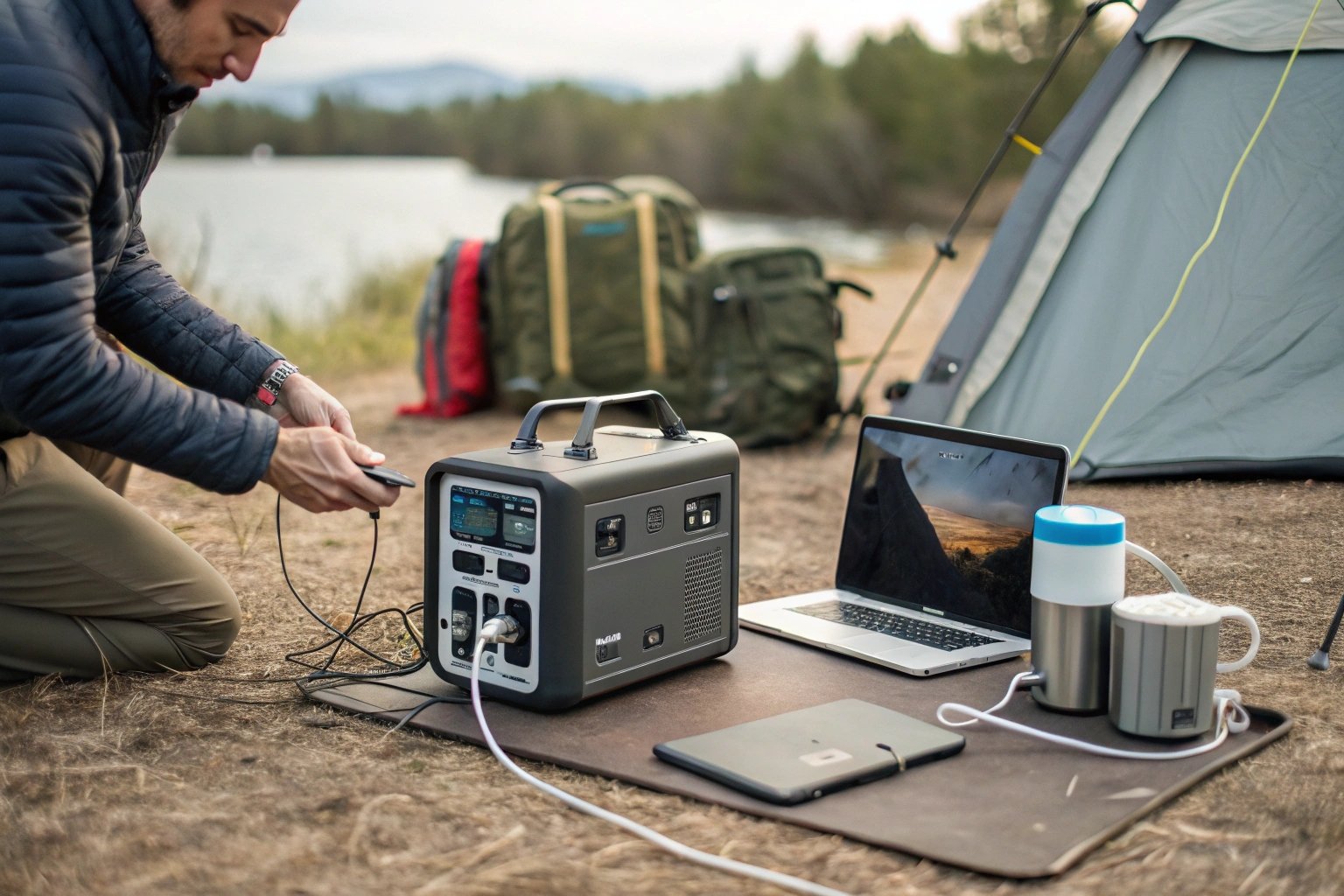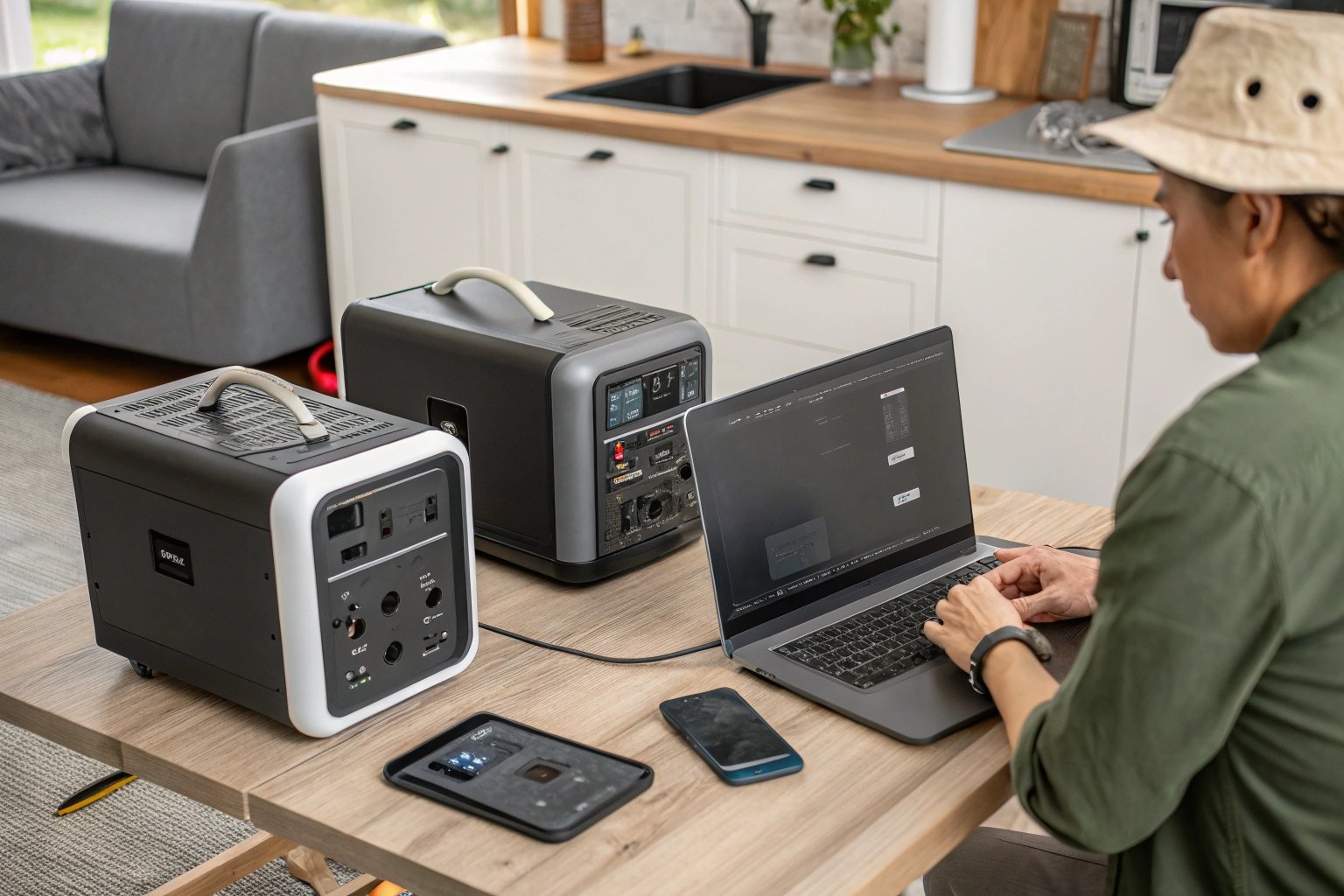When you’re looking for a portable solution to power your devices, you might come across both portable power stations and power banks. While they both serve similar functions, they have distinct differences that make them better suited for different needs. But which one should you choose?
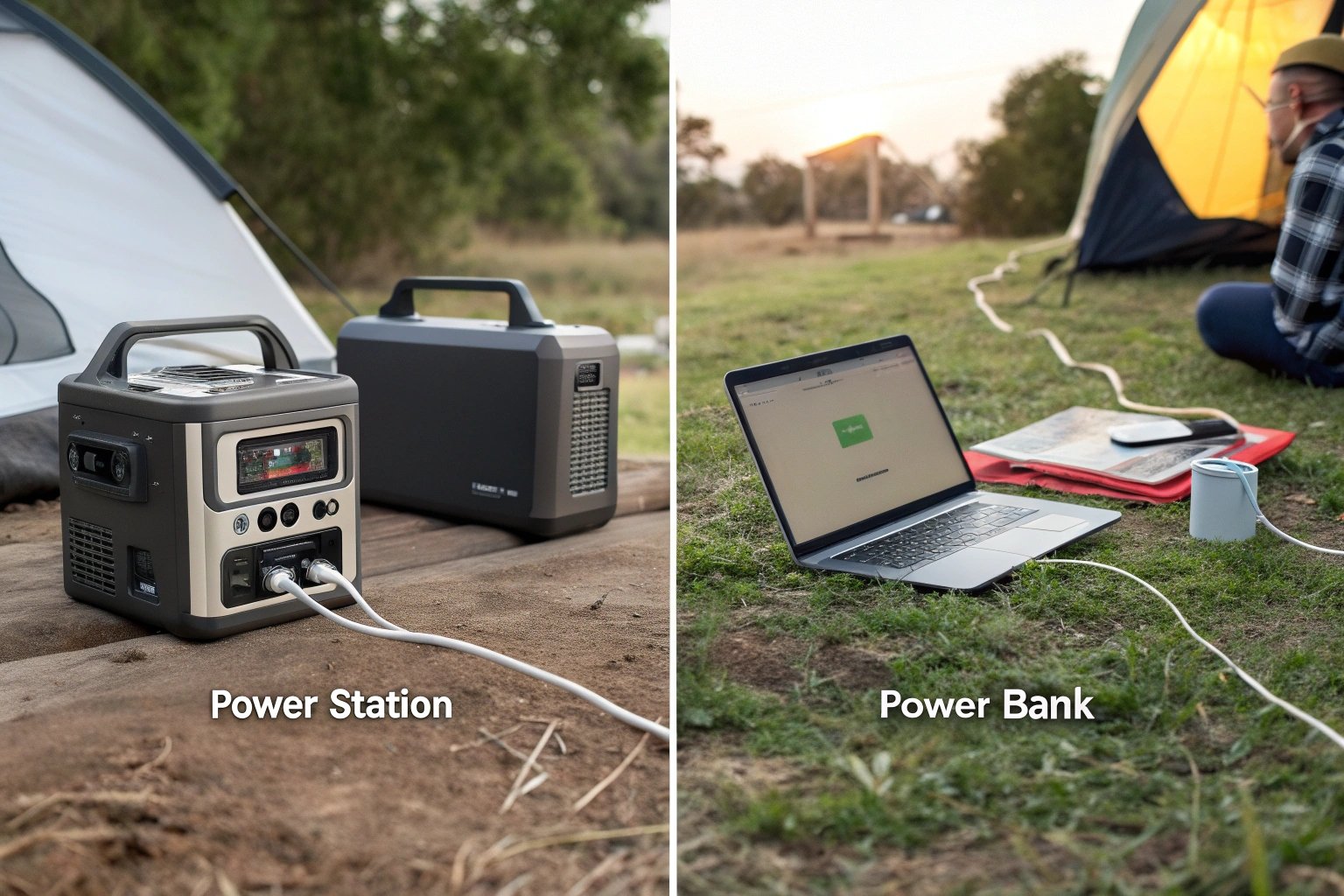
In this guide, we’ll compare portable power stations and power banks, helping you understand their key differences and which one is right for you.
What is a Portable Power Station?
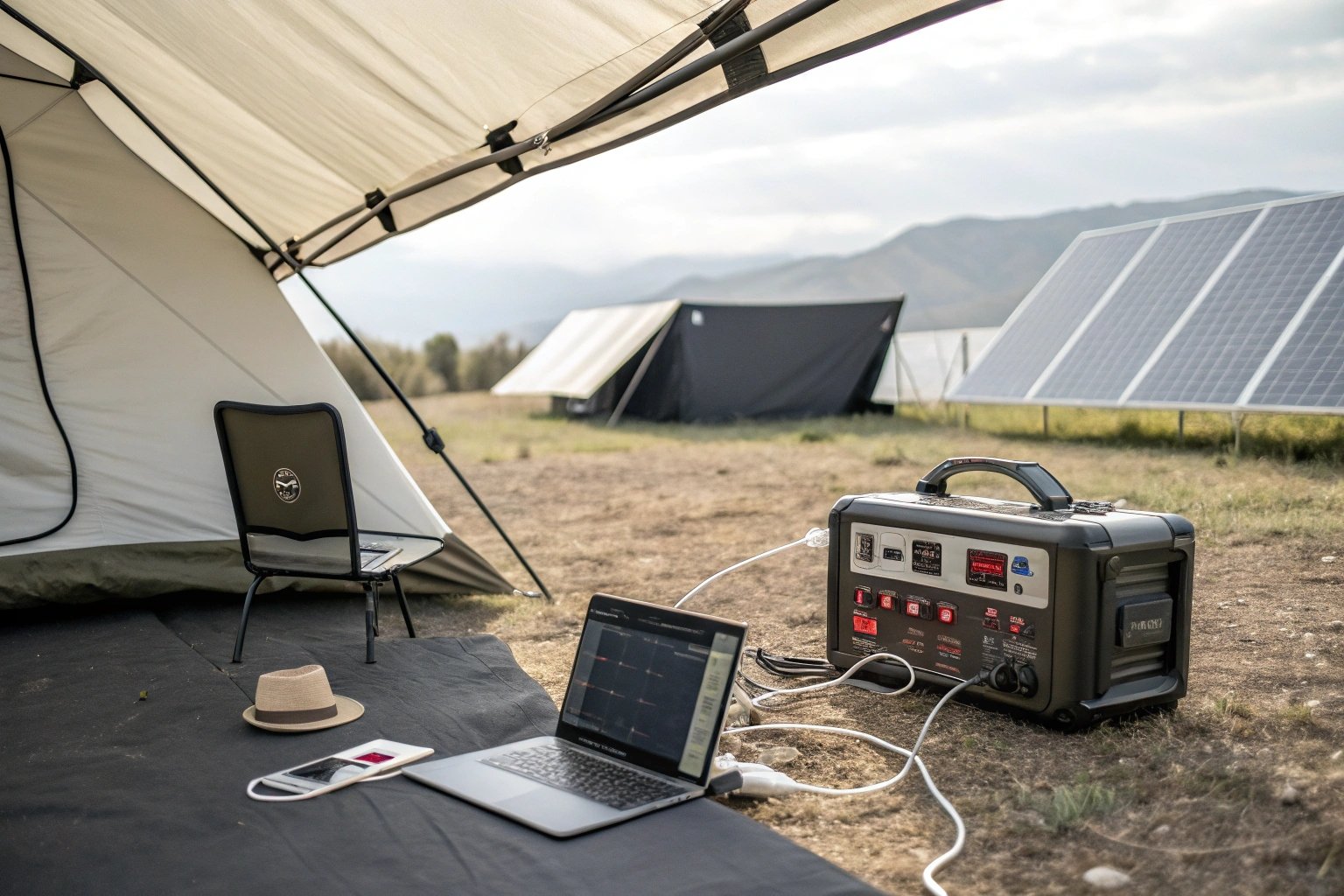
A portable power station is a larger, rechargeable battery unit designed to provide a significant amount of power for extended periods. It typically includes multiple output options like AC outlets, USB ports, and DC ports, allowing you to power a variety of devices, from smartphones to small appliances.
Portable power stations can be recharged using an AC wall outlet, car charger, or solar panel, making them versatile for a variety of off-grid and emergency situations.
What is a Power Bank?
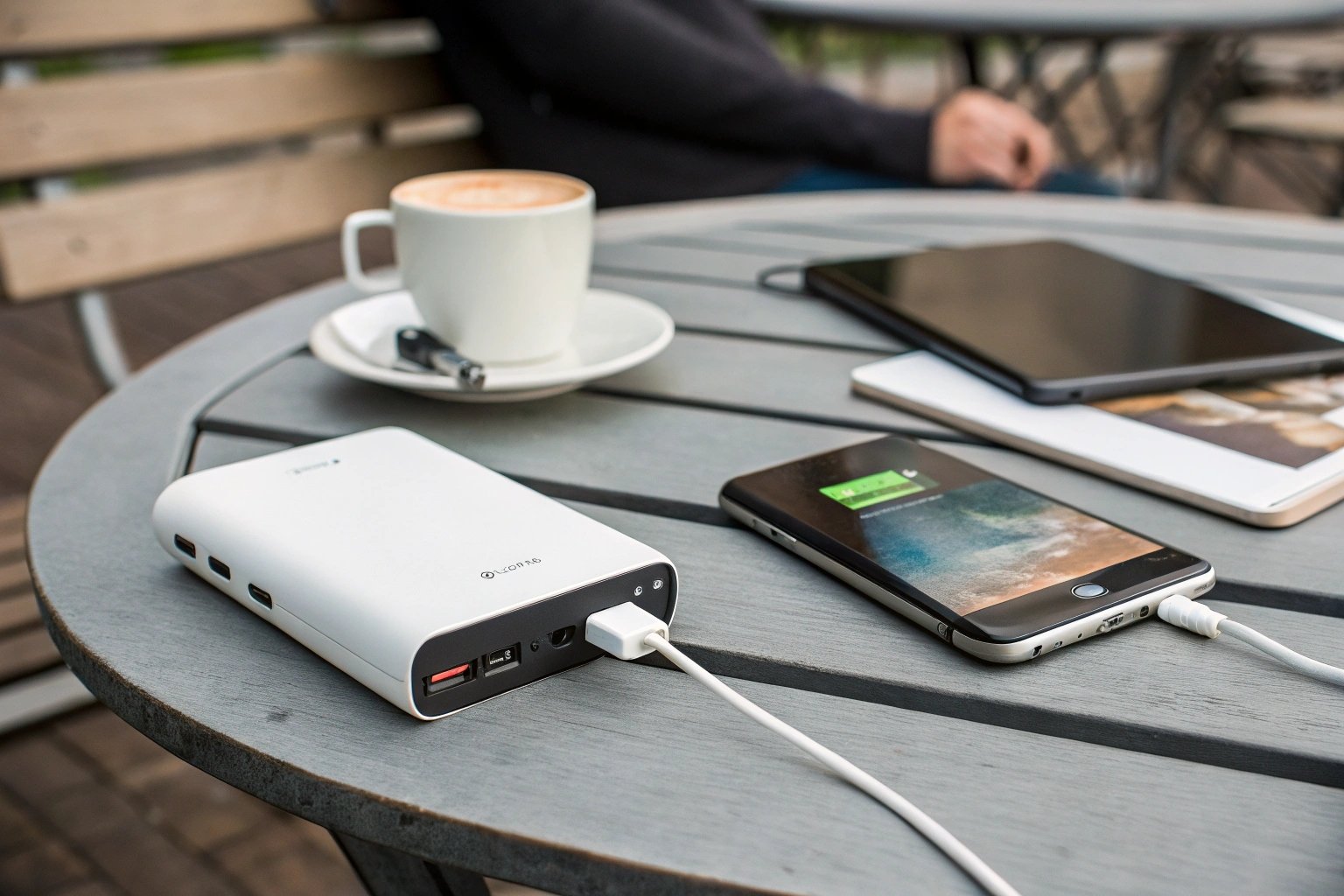
A power bank is a smaller, compact battery that’s primarily used to charge smaller devices like smartphones, tablets, and laptops. They are typically much smaller and lighter than portable power stations, making them convenient for everyday use when you’re on the go.
Power banks usually offer USB outputs for charging devices, and their capacity is typically lower than that of a portable power station, with most models ranging from 10,000mAh to 30,000mAh.
What Are the Key Differences Between a Portable Power Station and a Power Bank?
Size and Portability
The most obvious difference between the two is their size and portability. Power banks are small, lightweight, and easy to carry in a backpack or pocket. They’re perfect for charging your phone or tablet when you’re traveling or on the go.
In contrast, portable power stations are larger and heavier, typically weighing between 5-30 pounds. While they’re still portable, they’re not as convenient to carry as power banks. They’re more suited for situations where you need to power larger devices or several devices simultaneously, like during camping trips, road trips, or emergencies.
| Feature | Portable Power Station | Power Bank |
|---|---|---|
| Weight | 5-30 lbs | 0.5-2 lbs |
| Size | Larger, bulky | Compact, pocket-sized |
| Portability | Less portable | Highly portable |
Power Capacity
Portable power stations are designed to store and deliver much more power compared to power banks. They typically have battery capacities ranging from 200Wh to 3000Wh, allowing them to power high-wattage devices like laptops, mini-fridges, lights, or small appliances for hours.
Power banks, on the other hand, have a capacity typically measured in milliampere-hours (mAh) or watt-hours (Wh). They range from 10,000mAh to 30,000mAh, which can charge smartphones, tablets, and some laptops but cannot handle large appliances.
| Feature | Portable Power Station | Power Bank |
|---|---|---|
| Battery Capacity | 200Wh - 3000Wh | 10,000mAh - 30,000mAh |
| Devices Powered | Phones, laptops, mini-fridges, small appliances | Phones, tablets, laptops |
| Runtime | Hours to days | Few hours |
Output Options
Portable power stations come with multiple output options. You’ll typically find AC outlets, DC ports, and USB ports, allowing you to charge or run a variety of devices simultaneously. Some even have 12V carports for powering camping gear, electric coolers, or small tools.
Power banks, on the other hand, usually provide USB outputs, typically USB-A or USB-C. Some high-capacity power banks may have one or two AC outlets but are generally limited in the types of devices they can power.
| Feature | Portable Power Station | Power Bank |
|---|---|---|
| USB Ports | Yes (multiple) | Yes (usually 1-3) |
| AC Outlets | Yes | Rare (if any) |
| DC Outputs | Yes | No |
| 12V Carports | Yes (in some models) | No |
Charging Time
Since portable power stations have larger batteries, they take longer to recharge than power banks. AC outlets typically charge a portable power station in 4-8 hours, while solar charging can take much longer, depending on the size of the solar panel and available sunlight.
Power banks are faster to recharge because their batteries are smaller. Most power banks take 3-5 hours to fully charge via a wall outlet, and solar charging is usually quicker due to their smaller capacity.
| Feature | Portable Power Station | Power Bank |
|---|---|---|
| Recharge Time (AC) | 4-8 hours | 3-5 hours |
| Recharge Time (Solar) | 6-12 hours or more | 2-4 hours |
Use Cases
When to Use a Portable Power Station:
- Camping or Off-Grid Activities: Power larger devices like fridges, lights, or medical equipment for extended periods.
- Emergency Backup: Use for powering essential devices during a power outage (e.g., phones, laptops, medical devices).
- Road Trips: Charge multiple devices, run small appliances, or use car camping gear.
When to Use a Power Bank:
- Everyday Use: Keep your phone, tablet, or smaller electronics charged throughout the day.
- Travel: Carry a compact, lightweight option for quick charges while on the go.
- Backup Charging: For quick emergency charges in case your phone or other small devices run low.
Which One Should You Choose?

Choosing between a portable power station and a power bank depends on your needs:
-
Choose a Portable Power Station if you need to power larger devices or multiple devices at once. It’s ideal for extended use and outdoor activities like camping or tailgating, or for backup power in emergencies.
-
Choose a Power Bank if you only need to charge smaller devices like phones, tablets, or laptops for shorter periods. It's more portable, lighter, and faster to recharge, making it ideal for everyday use and travel.
Conclusion
Both portable power stations and power banks offer unique advantages depending on your power needs. If you’re looking for a compact, lightweight device for charging smaller electronics, a power bank is a perfect solution. However, if you need to power multiple devices, larger appliances, or need a reliable backup power source for extended periods, a portable power station will provide the power and versatility you need. Understanding your power usage and environment will help you make the best choice.

